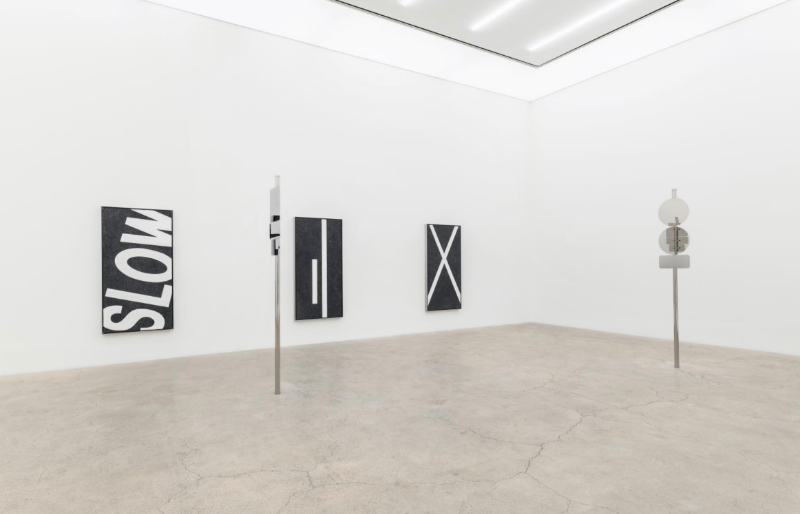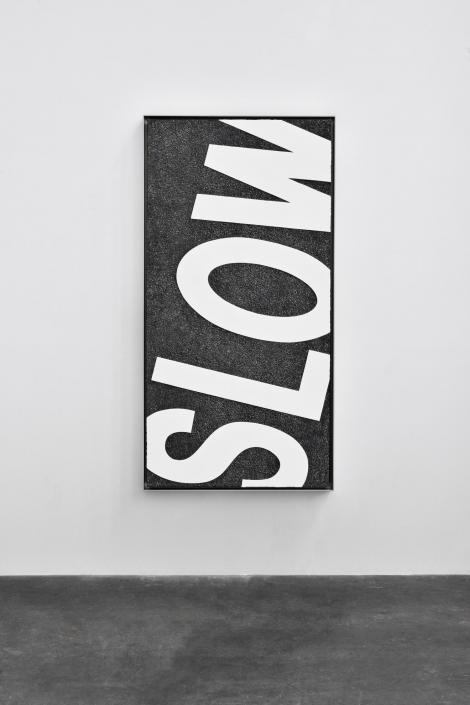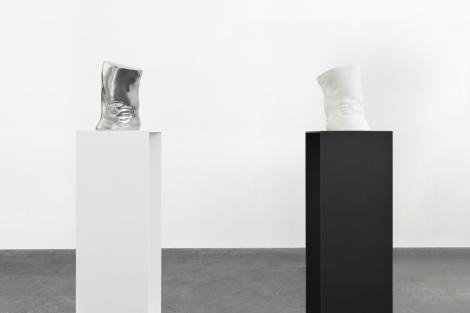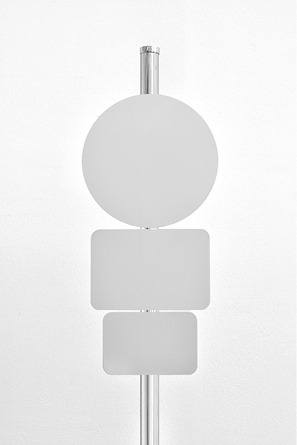
| Period| | 2019.03.21 - 2019.04.28 |
|---|---|
| Operating hours| | Monday ~ Saturday: 10 am ~ 6 pm Sunday ~ National holidays: 10 am ~ 5 pm |
| Space| | Kukje Gallery/Seoul |
| Address| | 54, Samcheong-ro, Jongno-gu, Seoul, Republic of Korea |
| Closed| | Open throughout the year |
| Price| | Free |
| Phone| | 02-735-8449 |
| Web site| | 홈페이지 바로가기 |
| Artist| |
마이클 엘름그린,잉가 드라그셋
|
정보수정요청



|
|
Exhibition Information




Kukje Gallery is pleased to announce Adaptations, an exhibition by the artist duo Elmgreen & Dragset on view from March 21 to April 28, 2019. Their first exhibition since joining the gallery, the ambitious presentation will be comprised of approximately 20 new works spanning both K3 and the ground level of K2. Entering K3, the visitor is faced with elements that are familiar from the public sphere. Dispersed around the room is a series of sculptures—Adaptations (2018-2019)—that take the form of street signs in standardized shapes commonly seen all over the world. But none of the signs display any symbols, colors, or markings—they are all made in stainless steel and mirror polished, so they reflect the space around them and the people within it. Rather than announce themselves with the urgency and high visibility that street signs normally do, they seem to camouflage themselves by adapting to the surroundings. Instead of giving instructions and directions, they function as an open form ready to negotiate and absorb new ideas. In the same space, asphalt—the most basic material on which we commonly walk or drive—has been used in a series of works entitled Highway Paintings (2019). Elmgreen & Dragset use rectangular pieces of asphalt as a ground and the paint normally used for painting road markings, creating paintings that are formally reminiscent of Minimalist geometric abstractions, but that clearly also refer to a shared urban language. Again, like with the street signs, this language is subverted and turned into signifiers that point to both the familiar and the subconscious. Each asphalt painting is framed in a custom-made steel frame—a nod to Minimalism’s fascination with industrial aesthetics and a further blurring of the division between traditionally high- and low-end materials, and of private and public material realities. Traffic rules and street markings are one of the few truly global languages, here personalized and altered by the artists to generate new meanings and aesthetics. Whereas the works in K3 focus on structures meant to control, direct, or navigate our moving bodies through public space, the works in K2 focus on the human body itself, from abstract to semi-abstract to figurative representations of the body including some of its intimate spheres. The audience is first met by a giant version of a human tailbone titled Tailbone (2019), an organic form that bears some resemblance to certain high modernist works by artists such as Barbara Hepworth and Jean Arp, but that also shows an affinity with the fluidity of Zaha Hadid’s architectural structures. The tailbone does not change its appearance according to race or gender and reminds us that we all come from the animal kingdom. Two male torsos titled The Influence, Fig. 1 and Fig. 2 (both 2019), not unlike the remains of Greco-Roman sculptures found in ruins and lacking limbs, are each displayed on a pedestal. Here, the torso has been purposefully sculpted as a fragment, with visible marks from another man’s hands imprinted on its waist, leaving it ambiguous as to whether the hands performed an act of violence or love. In line with the Roman tradition, which often saw many versions of the same sculpture produced over and over again (dubbed “serial classic” by the Italian curator Salvatore Settis), a matte white version and a polished aluminum version are shown opposite one another at each end of the room, on two different plinths. At certain intervals, the torsos change place, carried by two male performers, extending the inquiry into the objectification of art, history, labor, sexuality, and the body. Another fragment of the human body can be seen in Doubt (2019), a floating hand with an outstretched finger inserted inside one of the many holes torn into a human-sized, mirror-polished stainless steel plate. The work, which references the gesture in Caravaggio’s The Incredulity of Saint Thomas as well as Lucio Fontana’s punctured metal works, evokes a sense of alienation from one’s corporeal and spiritual self; here the traditional depiction of Christ’s lacerated body is exchanged with a contemporary material, the metal plate, which also acts as a mirror. In other works, Elmgreen & Dragset discuss our bodily relation to the physical materials and cultural frameworks that surround us every day. Multiple Me (2019) consists of several circular vanity mirrors attached to a rectangular structure. This passageway, which cannot be traversed, generates multiple partial reflections of gallery visitors, creating an extreme rendition of today’s selfie craze and consequently signifying a contemporary rite of passage. The material of this mirror-clad passageway, white Corian, is echoed in an adjacent circular bar counter, Looped Bar (2019), which is the most recent in Elmgreen & Dragset’s series of inverted bars of different shapes and sizes. With its beer taps pointing outwards and its bar stools inaccessible and trapped inside the looped counter, the bar has become dysfunctional and addresses questions about inclusion versus exclusion. With The Observer (Kappa) (2019), the artists shift viewing perspective and display a realistic figure in the midst of the exhibition’s otherwise semi-abstract language. This work shows the human body in its entirety: the lone figure of a shirtless man dressed in track suit pants casually leans over the railing of a balcony, his sleepy gaze fixed somewhere below. As an architectural feature, the balcony transgresses boundaries, being at once public and private, and the work captures an everyday moment in this borderline space where the protagonist is frozen in contemplation. About the Artists Michael Elmgreen (born 1961 in Copenhagen, Denmark) and Ingar Dragset (born 1969 in Trondheim, Norway) are based in Berlin and have worked together as an artist duo since 1995. The artists’ works often employ both humor and poignant sarcasm to comment on social and political issues. Across multiple mediums including architecture, installation, sculpture, and performance, the artists not only create narrative scenarios but also draw on absurdity to undermine the rigid systems that are embedded in the society we live in. Elmgreen & Dragset have been shortlisted for the Hugo Boss Prize, Guggenheim Museum, New York (2000), and were the recipients of the Preis der Nationalgalerie, Hamburger Bahnhof, Berlin (2002). In 2012, they were selected for London’s Fourth Plinth Commission in Trafalgar Square, and Public Art Fund presented their installation Van Gogh’s Ear at Rockefeller Center in New York City in the summer of 2016. Their endeavors encompass various curatorial projects including the most recent edition of the 15th Istanbul Biennial: a good neighbor in 2017. The duo has held numerous solo exhibitions in art institutions worldwide, including Whitechapel Gallery, London (2018-2019); Museum Haus Lange, Kunstmuseen Krefeld (2017); FLAG Art Foundation, New York (2016); Tel Aviv Museum of Art (2016); Ullens Center for Contemporary Art, Beijing (2016); PLATEAU, Samsung Museum of Art, Seoul (2015); Statens Museum for Kunst, Copenhagen (2014); Victoria and Albert Museum, London (2013); Museum Boijmans Van Beuningen, Rotterdam (2011); the ZKM | Museum of Contemporary Art, Karlsruhe (2010); Museo de Arte Contemporaneo de Castilla y León (MUSAC) (2009); The Power Plant Contemporary Art Gallery, Toronto (2006); Serpentine Gallery, London (2006); Tate Modern, London (2004); and Kunsthalle Zürich (2001). Their work has been introduced in many prestigious biennials including Istanbul (2013, 2011, 2001), Liverpool (2012), Performa 11 (New York, 2011), Singapore (2011), Moscow (2011, 2007), Venice (2009, 2003), Gwangju (2006, 2002), Sao Paulo (2002), Busan (2000), and Berlin (1998), and in 2009 they received a special mention for their exhibition The Collectors in the Nordic and Danish Pavilions at the 53rd Venice Biennale. Their works can be found in major museums and private collections, including the Hamburger Bahnhof – Museum für Gegenwart, Berlin; the Museum of Contemporary Art Chicago; Louisiana Museum, Humlebaek; Statens Museum for Kunst, Copenhagen; K11 Art Foundation, Hong Kong; Arken Museum for Moderne Kunst, Ishøj; Leeum Samsung Museum of Art, Seoul; Yuz Museum, Shanghai; Moderna Museet, Stockholm; Museum moderner Kunst Stiftung Ludwig Wien (mumok), Vienna; and Kunsthalle Zürich, among many others.
